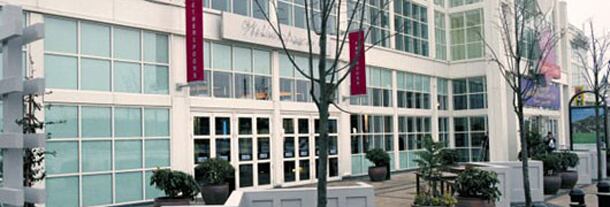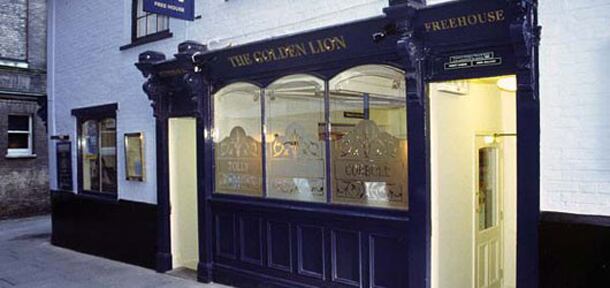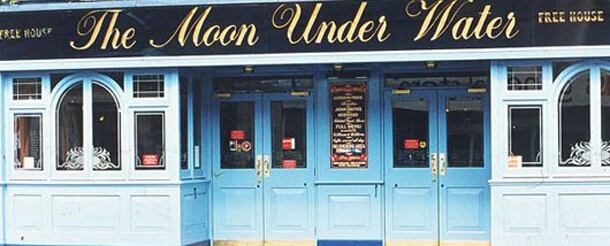Want to view more properties for sale? Visit the PMA property site.
The Almond Bank, Livingston

- Opened - 2002
According to JDW's description of the location: 'In April 1962, Livingston was designated as the site for a new town, to be built on the south bank of the River Almond. The first residents moved into Broom Walk four years later, and the first shop opened nearby.'
As with most new towns, big shopping centres were constructed, and this JDW is a typical shopping centre bar.
It takes its name from the former Almondbank Inn, in Livingston Village, which is now at the heart of the new town.
The Assembly Rooms, Solihull

- Opened - 2008
This Lloyds Bar is one of those in an impressive Victorian municipal building – in this case, standing in the town-centre for more than 130 years. The former Public Hall was built as a replacement for the old town hall and was used for gatherings, including assemblies, concerts and the Petty Sessions.
The Public Hall was acquired by the local authority in 1919. After Solihull Urban District Council was created in 1932, it became the 'council house'.
The Devonshire House, Crouch End

- Opened - 2010
When the pub’s own twitter profile says ‘A Wetherspoon in Crouch End…Whatever next’ followed by an open-mouthed emoticon, you know this was something of a departure for the pubco.
Previously an All Bar One, the pub opened as a JDW in 2010 and couldn’t be more centrally located, right by a crossroads in the town centre.
The Edward Wylie, Glasgow

- Opened - 2002
One of those ‘architectural gem’ JDWs…
This Wetherspoon pub occupies the corner unit of the massive American-style building designed by Edward Wylie as the headquarters of the Scottish Legal life Assurance Society.
Claiming to be ‘popular with the office crowd’ it has been open since 2002 as a JDW.
The Foxley Hatch, Purley

- Opened - 1993
According to the JDW site: The name of this Wetherspoon pub recalls the Foxleyhatch Turnpike which stood in this vicinity. The turnpike was a private road on which a toll was paid. The name 'Foxley' is from the Old English 'fox and leah' (meaning a clearing for foxes), and survives in nearby Foxley Lane.
No longer on a private road, this pub, which is one of the oldest JDWs to be disposed of in this list, is right next to the enormous Purley Cross junction and directly opposite a new flat development.
The Gatehouse, Lichfield

- Opened - 2000
This former long-standing bank is located next to the site of a Franciscan friary and the nearby gatehouse.
According to the Wetherspoons website: ‘The Friars had their own fresh water supply, which they made available to the townspeople via the conduit at the gate of the friary in Bird Street. From the 16th century, the town's water supply was in the hands of the Conduit Lands Trust.’
The Glass Works, Islington

- Opened - 2002
Prime central London site. This pub is part of the N1 development built on the site of a car park, which replaced several long-standing shops and small factories, such as the glass works which gave this pub its name.
The Golden Lion, Ipswich

- Opened - 1996
No information on the Wetherspoons site led the PMA to CAMRA…
According to CAMRA’s local guide…
Grade 2 listed hotel building and former posting house located in one corner of the historic Corn Hill. Once it stood beside the moot hall, today it is dwarfed by the Victorian Town Hall.
Originally the whole hotel complex formed the Golden Lion as the large roof sign suggests. The lion statue was once gilded; small remnants of this gilding still remain. Since 1998 the foyer has been used as a restaurant and the separate function room (to rear) has been used as an occasional live music venue whilst the hotel business still functions on the upper floors. Disabled toilet.
The bar area is operated as a single "L" shaped split level room with food and beer festivals. Beers from the JD Wetherspoon national beer list. Disabled toilet.
The building is supposed to date from the 18th century. An earlier inn called the White Lion stood on this site; whether in the same building or one preceding it is uncertain.
So there you have it…
Sir Issac Pitman, Trowbridge

- Opened - 1996
A town centre site. In a Grade II listed building from the early 19th century, this Wetherspoon pub is named after Trowbridge's most famous son. Isaac Pitman invented the system of shorthand which bears his name, and is used worldwide.
JDW spent nearly half-a-million six years ago doing up another site - a former Chicago Rock Café - around the corner from this pub.
Moon under Water, Balham

- Opened - 1993
Similar to the Purley site in location and design. Located near to the mainline tube and railway station and something of a fixture of the high street for more than two decades, it's one of several Wetherspoon's named after George Orwell's fictional 'ideal' pub, which he named 'The Moon under Water'.
Described by one person on TripAdvisor as a ‘useful’ branch of JDW which is an ‘oasis in the dusty urban Balham High Rd’.
The Oyster Rooms, Fulham

- Opened - 2002
Near to where Prince Harry got snapped eating a Nandos in Fulham Broadway Centre, this Lloyds Bar ‘more or less’ - according to the JDW website - sits on the site of the former Oyster Rooms restaurant – a local fixture for most of the 1920s and 1930s.
The Sennockian, Sevenoaks

- Opened - 1999
Town centre pub. The town takes its name from the Saxon word 'Seouenaca', meaning seven oaks. Its inhabitants are known as Sennockians – hence the name.
The pub is located in a brick built, mock-Tudor building constructed after the demolition of a diary in the 1930s. Typical of the high street and similar to the Purley site in that sense.
One TripAdvisor reviewer claims it doesn’t do Sunday lunch…which seems odd.
